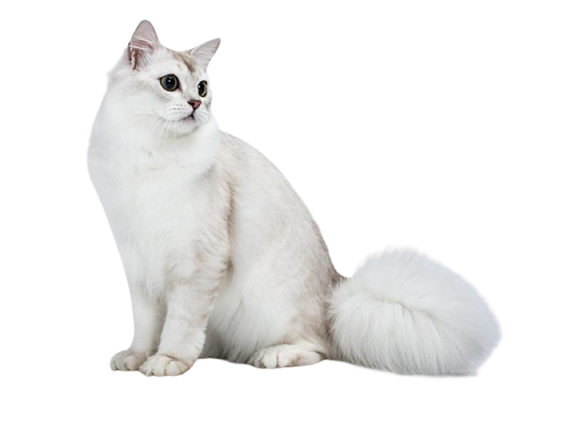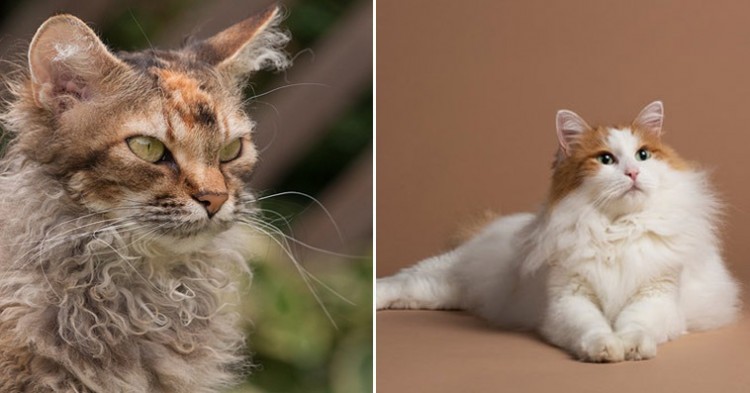Breed Information
| Popularity/Rank | 38 |
|---|---|
| Name | Burmilla |
| Other names | None |
| Origin | United Kingdom |
| Size | Medium |
| Coat | Dense, Short Hair, Silky, Long Hair |
| Lap Cat | Yes |
| Lifespan | 10 to 15 years |
| Temperament |
Friendly, Intelligent, Lively, Playful, Social, Easy Going 1. Friendly: The Burmilla is a friendly cat that gets along well with other pets and children. They are not shy and are always up for a game or a cuddle. 2. Intelligent: The Burmilla is an intelligent breed of cat that is quick to learn new tricks and commands. They are also good at problem solving, so don’t be surprised if they figure out how to open cupboards or doors! 3. Lively: The Burmilla is a lively breed of cat that loves to play and has lots of energy. They are always on the go and love to explore their surroundings. 4. Playful: The Burmilla is a playful breed of cat that loves to play with toys and other cats. They are always up for a game and will keep you entertained for hours on end! 5. Social: The Burmilla is a social breed of cat that loves to be around people and other cats. They are very affectionate and love to cuddle up with their owners. 6. Easy Going: The Burmilla is an easy going breed of cat that gets along well with other pets and children. They are not shy and are always up for a game or a cuddle. |
| Weight | Female: 6 - 11 pounds, Male: 7 - 13 pounds |
| Colors | Blue, Brown, Chocolate, Cream, Lilac, Red, Tortoise Shell, Black |
| Kitten Prices |
USD $800 - $1200
Burmilla kittens are priced anywhere from USD $800 to $1200. The price of a Burmilla kitten depends on the breeder, as well as the reputation of the breeder. The price also affects the parents of the Burmilla kitten. If the parents are from a good bloodline, then the kitten will be pricier. The quality of the Burmilla kitten also plays a role in its price. A high-quality kitten will be more expensive than one of lower quality. So, when choosing a Burmilla kitten, it is important to consider all of these factors before making a decision. |
Breed Characteristics
| Adaptability | |
|---|---|
| Affection Level | |
| Child Friendly | |
| Dog Friendly | |
| Energy Level | |
| Grooming | |
| Health Issues |
Feline infectious peritonitis, Feline leukemia, Feline immunodeficiency virus, Rabies, Ringworm Is Burmilla cat Hypoallergenic? There is no definitive answer to this question as each individual cat (and person) can have different levels of allergies. However, the Burmilla breed is known to be generally low-shedding and produces less of the Fel d 1 protein, which is the main allergen found in cat saliva. This makes them a good choice for people with mild to moderate allergies. Feline infectious peritonitis (FIP) is a viral disease that affects cats. The disease is caused by a coronavirus, and it is typically fatal. Symptoms of FIP include fever, weight loss, appetite loss, and abdominal pain. There is no cure for FIP, and treatment is typically supportive. Feline leukemia is a viral disease that affects cats. The disease is caused by a retrovirus, and it can be fatal. Symptoms of feline leukemia include fever, weight loss, appetite loss, and lethargy. There is no cure for feline leukemia, but treatment is available to help manage the symptoms. Feline immunodeficiency virus (FIV) is a viral disease that affects cats. The disease is caused by a lentivirus, and it can be fatal. Symptoms of FIV include fever, weight loss, appetite loss, and lethargy. There is no cure for FIV, but treatment is available to help manage the symptoms. Rabies is a viral disease that affects mammals, including cats. The disease is typically fatal, and symptoms include fever, muscle weakness, paralysis, and seizures. There is no cure for rabies, and treatment is typically supportive. Ringworm is a fungal infection that affects the skin. The infection is typically not fatal, but it can cause hair loss and skin irritation. Treatment for ringworm typically includes antifungal medication. |
| Intelligence | |
| Shedding | |
| Social Needs | |
| Stranger Friendly | |
| Vocalization | |
| Health Care |
The Burmilla is a relatively new and rare breed of cat, having only been around since the 1980s. As such, not much is known about their specific health needs. However, all cats need routine preventive care in order to stay healthy, and the Burmilla is no exception.
Preventive care for the Burmilla should include regular vaccinations, routine deworming, and monthly flea and tick prevention. Additionally, all cats should be spayed or neutered to help prevent unwanted litters and reduce the risk of certain health problems. The Burmilla is a generally healthy breed, but like all cats, they are susceptible to certain health conditions. Some of the more common health problems seen in the Burmilla include respiratory infections, ear mites, and dental problems. By working with your veterinarian to provide routine preventive care for your Burmilla, you can help them stay healthy and enjoy a long, happy life. |
History
The Burmilla cat is a relatively new breed, having only been around since the 1980s. However, this does not mean that the breed does not have an interesting history. The Burmilla was actually created by accident when two different breeds of cats were accidentally bred together.
The first of these breeds was the Chinchilla Persian. The Chinchilla Persian is a very popular breed of cat and has been around for many years. The other breed was the Burmese. The Burmese is not as popular as the Chinchilla Persian, but it is still a well-known breed.
These two breeds were accidentally bred together in 1981 in England. The resulting kittens were very beautiful and had a very unique coat pattern. They also had a very pleasant temperament, which made them very popular with cat fanciers.
The Burmilla quickly became a very popular breed and soon there were many different color variations available. However, the popularity of the breed soon began to decline. This was due to several factors, including the fact that many of the original breeding stock had died out and there was no longer a large enough gene pool to sustain the population. In addition, many people began to prefer other newer breeds of cats such as the Bengal and the Savannah. As a result, by the early 2000s, there were only a handful of Burmillas left in existence.
However, in recent years there has been a resurgence in interest in the Burmilla breed and its numbers are slowly beginning to increase once again. This is due in part to dedicated breeders who are working to preserve this unique and beautiful breed of cat.
Description
The Burmilla cat is a domestic cat breed that was developed in the United Kingdom in 1981. The breed was created by crossing a Burmese with a Chinchilla Persian. The resulting kittens were then bred back to both parent breeds to create the new Burmilla breed.
The appearance of the Burmilla cat is similar to that of the Burmese, with a short, dense coat and a muscular body. However, the coat of the Burmilla is much softer and silkier than that of the Burmese, and comes in a wide variety of colors and patterns.
The lifespan of the Burmilla cat is 12-16 years. They are medium-sized cats, weighing 6-10 pounds. The colors of the Burmilla cat include black, blue, brown, chocolate, cream, lilac, silver, and tortoiseshell.
The personality of the Burmilla cat is affectionate and playful. They are intelligent cats who are quick to learn tricks and games. They are also very social animals and enjoy being around people and other animals.
Burmilla cats are generally friendly with other cats, dogs, children, and other animals. However, they may be shy around strangers at first. Once they get to know you, they will be your loyal friend for life!
The temperament of the Burmilla cat is gentle and loving. They make great companions for both children and adults alike. They are also relatively easy to care for compared to other breeds of cats.
The health of the Burmilla cat is generally good. However, like all breeds of cats, they are susceptible to certain health conditions such as obesity, heart disease, respiratory problems, and diabetes mellitus type 2 (DM2). It is important to keep your Burmilla at a healthy weight through proper diet and exercise to help prevent these health problems from developing.





